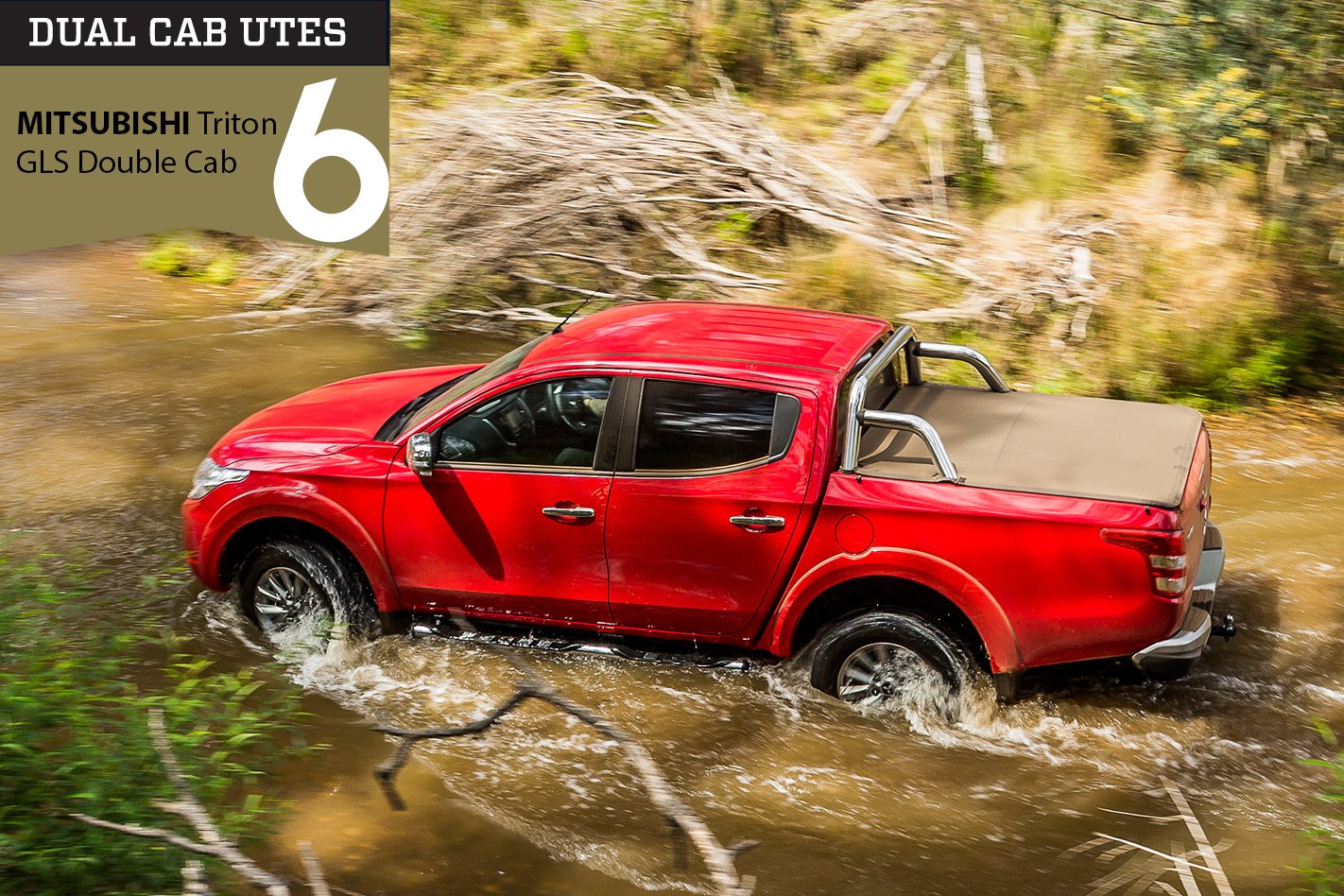There’s never been a better time to review the dual-cab 4×4 class of 2016 than right now. Wheels pitches eight of the biggest sellers in the segment for the title of King of the Heap. Here’s number six, the Mitsubishi Triton.
SIMPLY being the best drive in class doesn’t automatically make a car a best-seller, but brilliant value for money is a sure-fire way to make an impression on buyers. And that’s Mitsubishi’s approach with the Triton.
The launch of the fifth-gen model in May 2015 helped Triton’s buck-beating credentials while attempting to bring its on-road and off-road abilities closer to those of its rivals. Trouble was, changes in the ute market reduced the impact of Mitsubishi’s re-engineering and re-bodying, particularly in comparison with all-new rivals such as the eighth-gen Toyota Hilux.
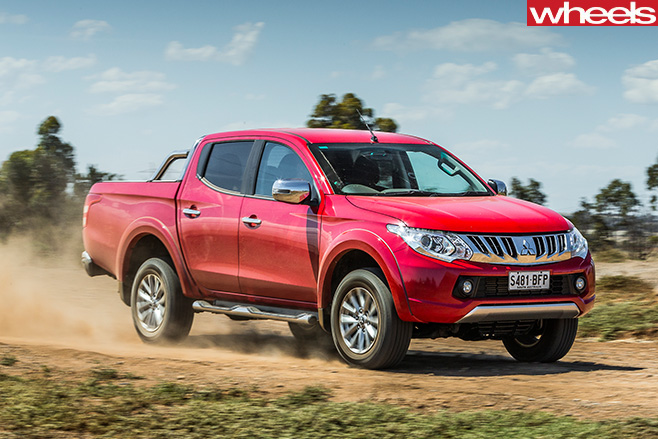
Triton’s appeal extends beyond price and equipment to a roomy cabin with a neatly presented dash with clear silver-rimmed instruments, and an appealing 6.1-inch central touchscreen as part of the new model’s updated audio system (which features digital radio).
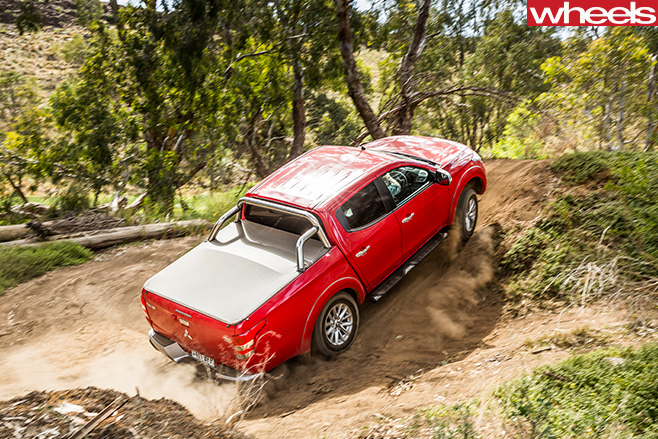
Triton’s update included measures to better suppress combustion noise and a revised injection system on the 2.4-litre turbo-diesel, and it shows, though don’t expect car-like refinement levels.
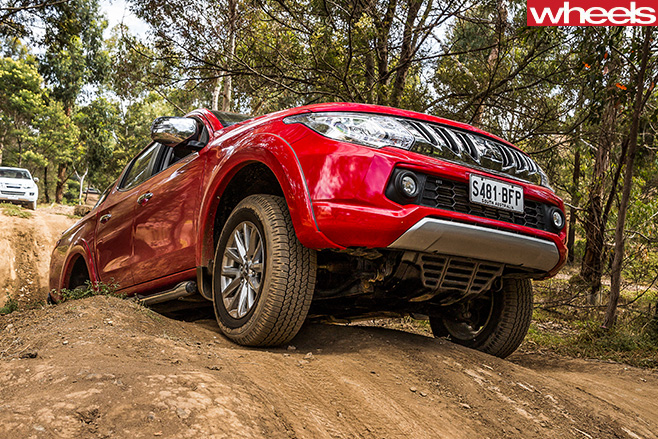
The leather steering wheel is nice to hold and twirls through a typical 3.8 turns lock-to-lock, but it’s connected to light, limp steering that is at odds with the ute’s image and abilities. Big turning circles rule in this realm, though the Triton’s is relatively tight at 11.8m.
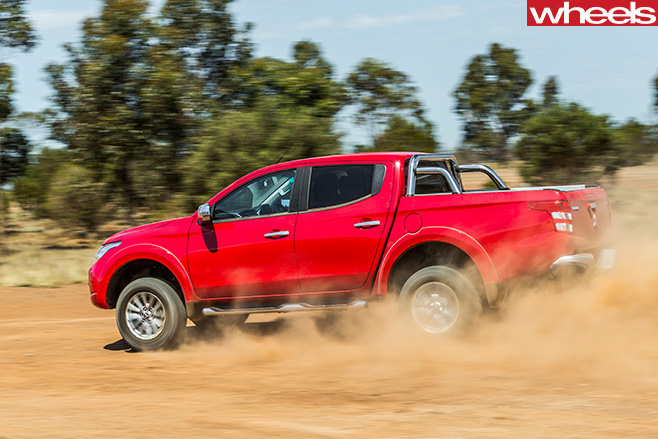
Clocking 11.5sec from 0-100km/h, it sees off Hilux, Amarok and the Isuzu D-Max, but not Ranger or Navara. In that context, an official consumption figure of 7.6L/100km is quite respectable.
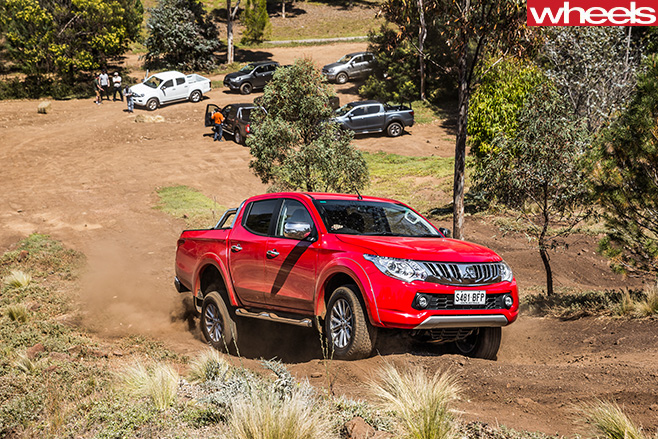
Mitsubishi’s five-year warranty could certainly swing punters in Triton’s favour, even if its styling does the opposite.
Off-road performance
The Triton is at an initial disadvantage because it lacks a rear locker (it’s standard only in the top-level Exceed). Combine this with limited rear wheel travel and an unpolished traction-control system and the Triton does it tough on the gnarliest climbs. On the flipside, the full-time Super Select II 4WD system (in GLS and Exceed versions) means no switching between 2WD and 4WD when you go from tarmac to beaten track and back (you can engage 4×4 mode without locking the centre diff), which is handy. Compact dimensions aid manoeuvrability while the engine now picks up air from the guard rather than beneath the bonnet lip.
Stay tuned as we rank each contender in the Dual-Cab 4×4 ute mega test in the May 2016 issue of Wheels – on sale April 21.
 SPECS
SPECS
Model: Mitsubishi Triton GLS Double Cab
Price as tested: $43,490
Engine: 2442cc 4cyl, dohc, 16v, TD
Power: 133kW @ 3500rpm
Torque: 430Nm @ 2500rpm
Transmission: 5-speed automatic
Dimensions (L/W/H/W-B): 5280/1815/1780/3000mm
Weight: 1950kg
Tray capacity: 950kg
Braked towing capacity: 3100kg
Unbraked towing capacity: 750kg
Ground clearance: 205mm
Tyres: Toyo A28 Open Country 245/65R17
ADR81 fuel consumption: 7.6L/100km
0-100km/h: 11.5sec
0-400m: 18.3sec @ 125.8km/h
80-120km/h: 7.9sec
3yr resale: 61%
Plus: Punchier and roomier than before; long warranty; value
Minus: Electronic diff not standard; limp steering; busy ride
Verdict: 6.0/10

